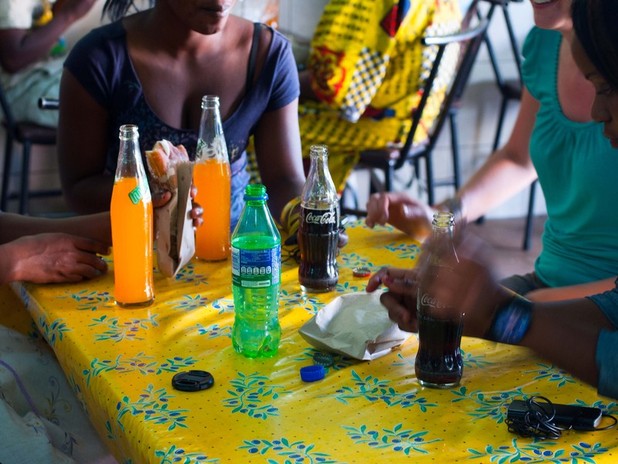January 29, 2014
After returning from Zambia with insight as to the life of urban teenagers, Minnie Bredouw and her IDEO.org team identify some key focus areas to explore during their prototyping phase.
Stop and close your eyes for a minute, and picture yourself back in high school. Keep your eyes closed. Remember how nervous you were arriving on the first day of the year? How long did it take you to decide on your outfit that day? Think back at the first time you went out on a date, maybe to the movies or to a dance. Remember how curious you were?
Adolescence is a period of your life like no other. Immersing ourselves in the teen culture with our partner Marie Stopes Zambia (MSZ) and talking to teens in urban communities, we found that youth in Zambia were going through so many similar experiences. They feel immense peer pressure to fit in, yet also want to establish themselves as individuals. They're at a point in their lives where boredom gives way to experimentation, and myth or gossip can easily escalate to accepted truth.
Not surprisingly, engaging teens in learning about sexual health is not a simple undertaking. So when it came to our design challenge – finding out how we might increase youth participation in sexual health services in Zambia – we knew we had our work cut out for us. During our first visit to Lusaka in December, we concentrated on putting ourselves in the shoes of urban teens. Through talking with or observing the behavior of teens in a number of environments - markets, neighborhood tours, workshops, or clinics - and by speaking with parents, we narrowed down our findings into six spaces where there is opportunity for further exploration.
1. Reposition "family planning" - This phrase proved to be incredibly confusing with youth, who quickly jumped to the conclusion that this is for people trying to plan a family, and not for them. How can we essentially rebrand family planning services?
2. Make sexual health as playful and experimental as sex - Sex is by nature experimental and playful when you're a teen, so why shouldn't sexual health be the same?
3. Integrate services into what teens already do - Teens don't want to be seen seeking out sexual health services, but could services be more accessible and better adopted if they fit into a teen's preexisting behaviors?
4. Provide a reliable way to separate fact from fiction - For teens, myths are often more compelling than the truth, hence, it's easier for the myth to be more widespread than the actual facts. How can we provide a reliable way to separate fact from fiction?
5. Build a culture of sexual health under the radar - From having to talk with parents to concerns about reputation or religion, there are many barriers in the way of seeking sexual health services. Would services and information be more effective if spread by a more secretive culture of sexual health?
6. Take time to build trust - Building up relationships with trusted mentors or making them part of a community empowers youth and builds their confidence. How can we leverage this to bridge the gap between youth and sexual health services?
Our team is looking forward to spending some time exploring these focus areas out in the field over the next several weeks. From testing how we might get truthful information to rise above myth to experimenting with making sexual health services more approachable, we are excited to see what teens gravitate towards and what doesn't work. And following our prototypes we'll be able to hone in on a few strong concepts to move forward with.







